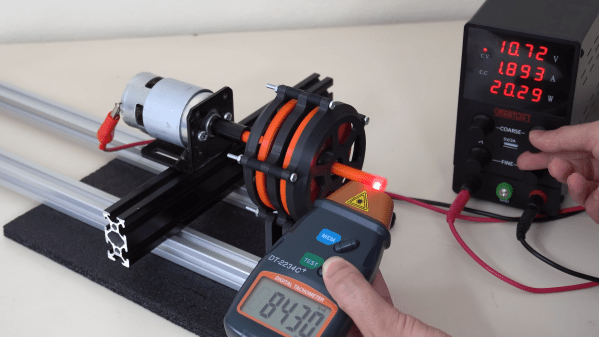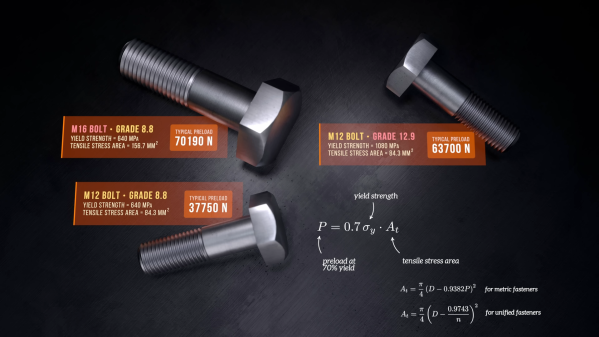Unless you’ve got a shop with a well-stocked hardware bin, it’s a trip to the hardware store when you need a special screw. But [Sanford Prime] has a different approach: he prints his hardware, at least for non-critical applications. Just how much abuse these plastic screws can withstand was an open question, though, until he did a little torque testing to find out.
To run the experiments, [Sanford]’s first stop was Harbor Freight, where he procured their cheapest digital torque adapter. The test fixture was similarly expedient — just a piece of wood with a hole drilled in it and a wrench holding a nut. The screws were FDM printed in PLA, ten in total, each identical in diameter, length, and thread pitch, but with differing wall thicknesses and gyroid infill percentages. Each was threaded into the captive nut and torqued with a 3/8″ ratchet wrench, with indicated torque at fastener failure recorded.
Perhaps unsurprisingly, overall strength was pretty low, amounting to only 11 inch-pounds (1.24 Nm) at the low end. The thicker the walls and the greater the infill percentage, the stronger the screws tended to be. The failures were almost universally in the threaded part of the fastener, with the exception being at the junction between the head and the shank of one screw. Since the screws were all printed vertically with their heads down on the print bed, all the failures were along the plane of printing. This prompted a separate test with a screw printed horizontally, which survived to a relatively whopping 145 in-lb, which is twice what the best of the other test group could manage.
[Sanford Prime] is careful to note that this is a rough experiment, and the results need to be taken with a large pinch of salt. There are plenty of sources of variability, not least of which is the fact that most of the measured torques were below the specified lower calibrated range for the torque tester used. Still, it’s a useful demonstration of the capabilities of 3D-printed threaded fasteners, and their limitations.


















